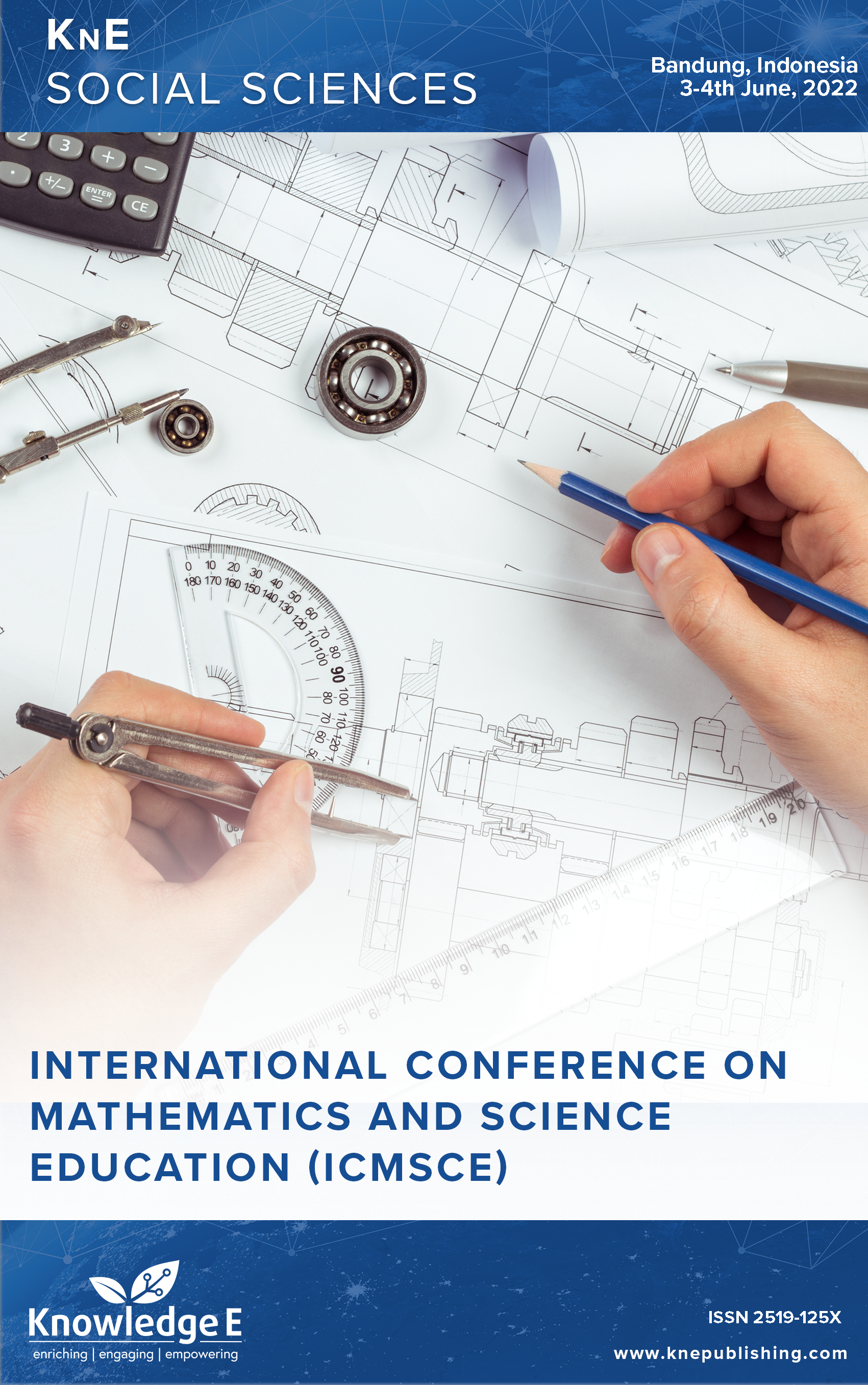Profile of Pre-service Physics Teachers' Representational Fluency on Electrostatic Concept
DOI:
https://doi.org/10.18502/kss.v9i13.16018Abstract
Science teachers have to master representational to communicate and be aware of the students’ difficulties in understanding science concepts. This study aims to determine representational fluency as part of science communication skills in pre-service physics teachers. This study uses descriptive analysis techniques based on the percentage. The research subjects are 50 pre-service physics teachers aged between 19 and 22 years. This study was conducted at the Study Program of Physics Education of a college in Maluku. How fluent is a pre-service physics teacher in representing the concept of electrostatic was measured using 15 valid and reliable representational fluency multiple choice test that includes four component of representational fluency: constructing single representation, constructing multiple representation, translating between representation and reviewing single representation. The findings of the present study indicate that although students had started to learn concepts of electrostatic their representational fluency is still low. The preservice teachers’ rate of giving correct answers to the test items varies between 8% and 48%. The mean score of the pre-service teachers was found to be 4.06.
Keywords: representational fluency, electrostatic
References
Shulman LS. Those who understand: knowledge growth in teaching. Educ Res. 1986;15(2):4–14. DOI: https://doi.org/10.3102/0013189X015002004
Leinhardt G. Math lessons: A contrast of novice and expert competence. J Res Math Educ. 1989;20(1):52–75. DOI: https://doi.org/10.5951/jresematheduc.20.1.0052
Eilam B, Poyas Y. Teachers’ interpretations of texts-image juxtapositions in textbooks: from the concrete to the abstract. J Curric Stud. 2012;44(2):265–97. DOI: https://doi.org/10.1080/00220272.2011.637181
Nichols K, Stevenson M, Hedberg J, Gillies RM. Primary teachers’ representational practices: from competency to fluency. Camb J Educ. 2016;46(4):509–31. DOI: https://doi.org/10.1080/0305764X.2015.1068741
Bieda KN, Nathan MJ. Representational disfluency in algebra: evidence from student gestures and speech. ZDM Math Educ. 2009;41(5):637–50. DOI: https://doi.org/10.1007/s11858-009-0198-0
M. Hill, M.D. Sharma, J. O’Byrne, and J. Airey, “Developing and evaluating a survey for representational fluency in science.,” International Journal of Innovation in Science and Mathematics Education. vol. 22, no. 6, p. 2014.
Nathan MJ, Stephens AC, Masarik DK, Alibali MW, Koedinger KR. “Representational fluency in middle school: A classroom study.,” In: Proceedings of the twenty-fourth annual meeting of the North American chapter of the International Group for the Psychology of Mathematics Education. pp. 462–472. ERIC Clearinghouse for Science, Mathematics and Environmental Education, Columbus, OH (2002).
Gilbert JK. Visualization: An emergent field of practice and enquiry in science education. Visualization: Theory and practice in science education. Dordrecht: Springer Netherlands; 2008. pp. 3–24. DOI: https://doi.org/10.1007/978-1-4020-5267-5_1
Disessa AA. Metarepresentation: native competence and targets for instruction. Cogn Instr. 2004;22(3):293–331. DOI: https://doi.org/10.1207/s1532690xci2203_2
Khol P. B., and N.D. Finkelstein, “Effect of intructional environment on physics students’ representational skills,”. Phys Rev Spec Top Phys Educ Res. 2016;2:1–8. DOI: https://doi.org/10.1103/PhysRevSTPER.2.010102
Mulhall P, McKittrick B, Gunstone R. A perspective on the resolution of confusions in the teaching of electricity. Res Sci Educ. 2001;31(4):575–87. DOI: https://doi.org/10.1023/A:1013154125379
Gilbert JK, Treagust DF. Introduction: Macro, submicro and symbolic representations and the relationship between them: Key models in chemical education. Multiple representations in chemical education. Dordrecht: Springer Netherlands; 2009. pp. 1–8. DOI: https://doi.org/10.1007/978-1-4020-8872-8_1
Linn MC. The knowledge integration perspective on learning and instruction. Cambridge University Press; 2006. DOI: https://doi.org/10.1017/CBO9780511816833.016
Handayani W, Masrifah M. Development physics representational fluency instrument test of electrostatic concept. J Phys Conf Ser. 2021;2098(1):12009. DOI: https://doi.org/10.1088/1742-6596/2098/1/012009
Ceuppens S, Deprez J, Dehaene W, Cock M. Design and validation of a test for representational fluency of 9th grade students in physics and mathematics: the case of linear functions. Phys Rev Phys Educ Res. 2018;14(2):20105. DOI: https://doi.org/10.1103/PhysRevPhysEducRes.14.020105
Festiana I, Firman H, Setiawan A, Muslim M. Design and development of representational fluency test in physics. J Phys Conf Ser. 2020;1521(2):22034. DOI: https://doi.org/10.1088/1742-6596/1521/2/022034
Arikunto S. Dasar-dasar Evaluasi Pendidikan. Jakarta: Bumi Aksara; 2012.
Nguyen NL, Meltzer DE. Initial understanding of vector concepts among students in introductory physics courses. Am J Phys. 2003;71(6):630–8. DOI: https://doi.org/10.1119/1.1571831
Chang HY, Tzeng SF. Investigating Taiwanese students’ visualization competence of matter at the particulate level. Int J Sci Math Educ. 2018;16(7):1207–26. DOI: https://doi.org/10.1007/s10763-017-9834-2
Swafford JO, Langrall CW. Grade 6 students’ preinstructional use of equations to describe and represent problem situations. J Res Math Educ. 2000;31(1):89–112. DOI: https://doi.org/10.2307/749821
Lemke J. Multimedia literacy demands of the scientific curriculum. Linguist Educ. 1998;10(3):247–71. DOI: https://doi.org/10.1016/S0898-5898(99)00009-1
Gunel M, Hasancebi FY. “Modal representations and their role in the learning process: A theoretical and pragmatic analysis.,” Educational Sciences: Theory & Practice. vol. 16, no. 1, p. 2016.
Kozma R, Russell J. “Students becoming chemists: Developing representational competence.,” Visualization in science education. vol. 1, pp. 121–146, 2005. DOI: https://doi.org/10.1007/1-4020-3613-2_8

